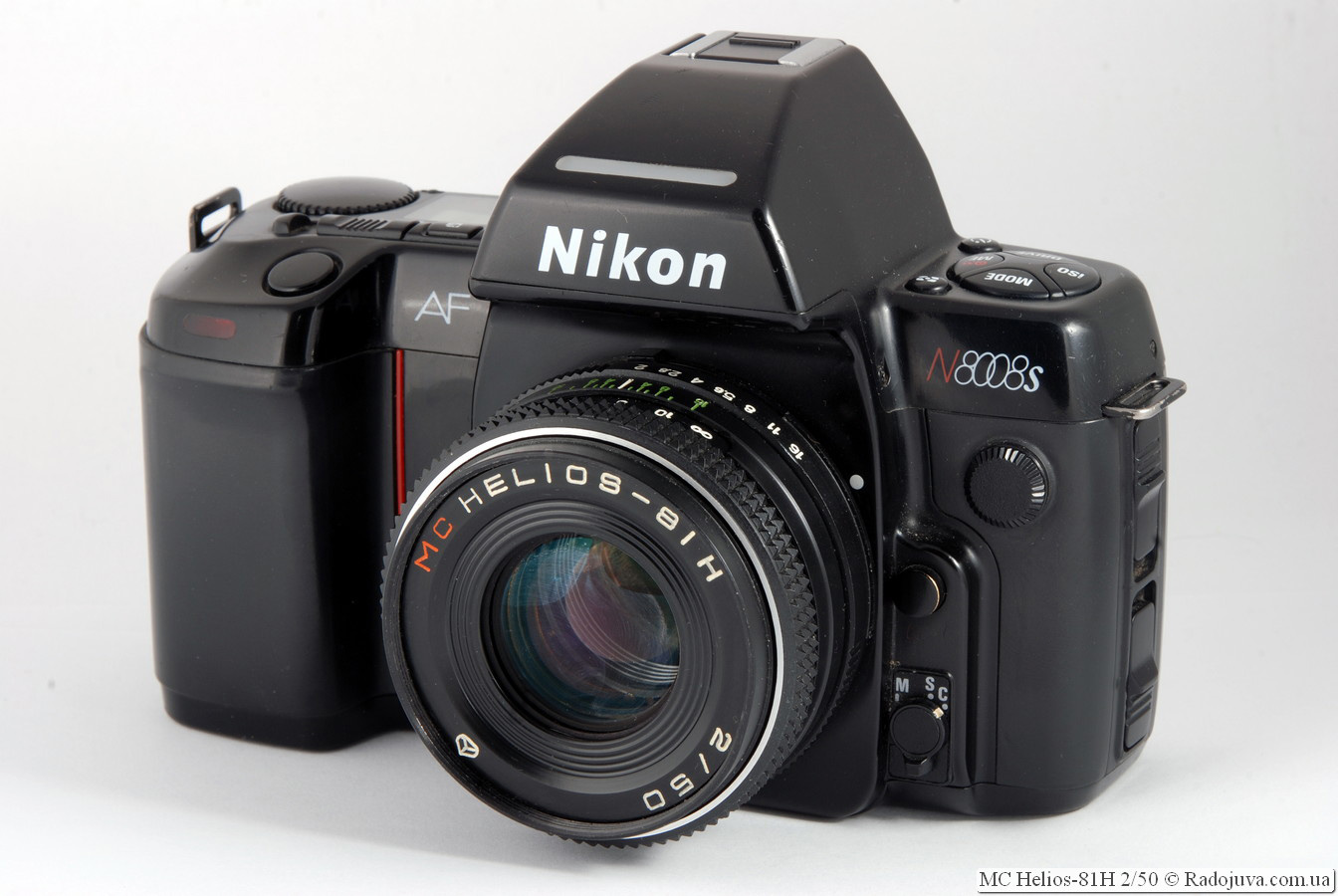
MC Helios-81H 2/50 lens on the camera Nikon AF N8008s. Enlarge Image.
In short
MC Helios-81H 2/50 (or MC Helios-81H 2/50, or Arsat H 50mm 1: 2) - is one of the best standard lenses of Helios family... This lens is most often called a 'fifty-kopeck piece' because of the focal length of 50mm. On full-frame cameras (film and digital cameras with a frame size of 36 x 24 mm) it is standard (in terms of focal lengths and angle of view) and is suitable for everyday use for a wide range of tasks. Helios-81 can also be used as a portrait and creative lens on modern cropped cameras.
In my opinion, Helios-81 earned its popularity due to its compatibility with Nikon digital SLR cameras with Nikon F mount. The bulk of the lenses of the Helios-81 family do not require any adapters and work similarly to the original manual Nikon Nikkor AI / PRE-AI lenses. ...
Also, the popularity of the lens is associated with a special twist of the background, inherent in many lenses of the Helios family, as well as good optical capabilities at a fairly low cost. On average, Helios-81N can be found for $ 30.
Critical: there are many different variants of the lenses of the Helios-81 H / M / AUTOMAT family. If the latest versions are indeed some of the best stock lenses from Helios family, then early versions are the worst... Early versions are easily distinguished by their wide focusing ring and serial number near the front lens. These options have many mechanical problems. Later and better versions have a serial number in small print on the side of the aperture control ring. Here is such a paradox - from the best to the worst is just a step. I strongly advise against messing with these early versions (shown, for example, in the 'Appearance # 3' section). And also by no means do not purchase lenses marked 'AUTOMATIC'... Lenses series Helios-81N AUTOMATIC have a different mount, for which there are no adapters for any cameras (the appearance of lenses HELIOS-81 2/50/53 AUTOMATIC shown here). If something is not very clear, or if you want to be 100% sure that the future purchased lens will please you - ask here in the comments, or contact me according to my personal contacts.
It is difficult to overestimate the creative potential of such fifty dollars. Photo enthusiasts often use it as a portrait lens. Many people just want a fast prime, especially in addition to their stock / kit lens. Aperture F / 2 approx. three steps wider aperture of f / 5.6, which is used in 'dark' kit lenses at the long end. In numerical terms, this means that Helios-81 is approximately 8 times brighterthan, for example, whale Nikon DX VR AF-P Nikkor 18-55mm 1: 3.5-5.6Gwhich use a maximum relative aperture of only 50: 1 over a 5.6 mm focal length. The calculation of the difference in the relative aperture (count the aperture) is performed elementarily: (5.6 * 5.6) / (2 * 2) = 7.84, which is rounded to the value '8'.
History
Helios-81 is a descendant of the Helios-65 (HELIOS 65 AUTOMATIC 2/50), which, in turn, is a shortened descendant of the lenses family Helios-44.
The Helios-81 lens family includes many models and their modifications. In general, the development of the line proceeded as follows: Helios-81 AUTOMAT -> Helios-81 M or N -> MC Helios-81 M or N -> MC Helios-81 N -> Arsat H. Each of the modifications has several subversions.
For practical use, the latest versions of MC Helios-81 H (aka 'MC HELIOS 81 H') and Arsat are best suited for which the serial number is indicated in small print on the lens barrel, and not near the front lens.
Appearance # 1
Lens shown below MS HELIOS-81H 2/50 with serial number 9227112, presumably produced in 1992. The front and rear lenses of the objective have cyan, blue, lilac, violet and red anti-reflective shades.
Appearance # 2
Lens shown below MC HELIOS-81H 2/50 with serial number 9315003, presumably produced in 1993. The front lens of the objective has green, purple and red shades of enlightenment.
Appearance # 3
Lens shown below MS HELIOS-81M 2/53 with serial number 8204223, presumably produced in 1982. Filter diameter 49 mm. The front lens of the objective has blue, lilac, violet, red and yellow anti-reflective shades. The petals of the diaphragm are shiny, yellowish-orange (copper-colored). The focus ring rotates 315 degrees (7/8 of a full turn). Three intermediate clicks between F / 2 and F / 2.8 and two intermediate clicks between the other pairs of f-numbers (rare). Does not sit on without alteration Nikon D70, D70s, D80, D90... Nikon is installed on the rest of the CZK without problems. No protrusion for the diaphragm rheostat, with a long 'skirt' of the diaphragm control ring (but the skirt does not rest against the diaphragm rheostat). Nikon F mount, letter 'M' stands for 'M' blinking aperture.
Appearance # 4
Lens shown below ARSAT H 50mm 1: 2 with serial number 9417121, presumably produced in 1994. The front lens of the objective has green, purple and blue shades of enlightenment.
Appearance # 5
Lens shown below HELIOS-81N 2/53 with serial number 8309805, presumably produced in 1983. Filter diameter 49 mm. The front lens of the objective has bluish and ash shades of enlightenment. The diaphragm blades are shiny, silvery. The focus ring rotates 315 degrees (7/8 of a full turn). Three intermediate clicks between F / 2 and F / 2.8 and two intermediate clicks between the other pairs of f-numbers (rare). Does not sit on without alteration Nikon D70, D70s, D80, D90... Nikon is installed on the rest of the CZK without problems. No protrusion for the diaphragm rheostat, with a long 'skirt' of the diaphragm control ring (but the skirt does not rest against the diaphragm rheostat). Nikon F. mount.
Main technical specifications MC Helios-81H 2/50
| The name of the instance from the review (as it is written on the lens itself) | MC Helios-81H 2/50 with the logo of the Arsenal factory (there are a lot of other ways to write the name of the lens) |
| Basic properties |
|
| Front Filter Diameter | 52 mm (there are options for 49 mm) |
| Focal length | 50 mm (according to some sources - 52 or 53 mm), EGF for cameras with an APS-C type sensor is approximately 75 mm |
| Zoom ratio | 1 x |
| Designed by | for film cameras with a frame size of 36 mm X 24 mm |
| Number of aperture blades | 6 petals. Petals form a hexagon of approximately the correct shape. Petals are dull metal, not blackened. |
| Tags |
|
| Diaphragm | From F / 2 to F / 16.0, it is regulated by the aperture ring, there is no diaphragm operation method switch on the lens. The ring has one intermediate fixed value between the indicated pairs of numbers (between F / 11 and F / 16 there is no intermediate value). |
| MDF (minimum focusing distance) | 0.5 m, maximum magnification ratio is 1: 7 (approximately) |
| The weight | 214 grams measured without caps (lens itself only) |
| Optical design | 6 elements in 4 groups, ('Planar' type scheme) |
| Lens hood | screwed into the front filter, the original lens hood markings were not found. Any analogs are suitable, according to type of such |
| Manufacturer country | USSR, Arsenal plant (later the lens was produced under the 'Arsat' brand in Ukraine). |
| Period | Several years, the exact period of production is unknown. |
Lens modifications
Please note that there are many modifications of the lens and many spellings of its name. The main ones are:
'AUTOMATIC' versions
- Helios-81 2/50 Automatic - you can see an overview of this modification here
- Helios-81 2/53 Automatic - you can see an overview of this modification here
- Helios 81 2/50 Automatic (no dash between 'Helios' and '81')
Versions 'М 2/53'
- Helios-81М 2/53 with H-mount, metal silvery unblacked petals, you can see an overview of this modification here
- Helios-81М 2/53 H-mount, copper colored metal petals not blackened
- MS Helios-81M 2 /53 H-mount, copper-colored, unblacked metal petals (appearance # 3 from this review)
Versions 'H'
- MS Helios-81H 2/50 (with serial number near the front lens, long skirt of the aperture control ring, wide focusing ring)
- MS Helios-81N 2/50 (serial number from the bayonet side, short skirt of the diaphragm control ring, lilac enlightenment, one of the most common and classic options)
- MS Helios-81N 2/50 (serial number from the bayonet side, short skirt of the diaphragm control ring, green enlightenment, one of the most common and classic options)
- MS Helios-81N 2 /53 (appearance # 5 from this review)
- Helios-81Н 2/53 (analogue of Helios-81M 2/53)
- ARSAT H 1: 2 50mm - an almost complete copy of MC Helios-81N 2/50, the differences are described here
- MC Helios-81h 2/50 - full copy of MS Helios-81H 2/50, export version, this version looks like like this.
- MC Helios-81 2/50 - full copy of MC Helios-81N 2/50, export version
Other versions
- Helios-81 2/50
- Helios-81 2/52 (diaphragm ring on the front of the lens)
- Helios-81 (GK-81)
- GOI << HELIOS-81 >> 2 / 52,4 (silver metal case)
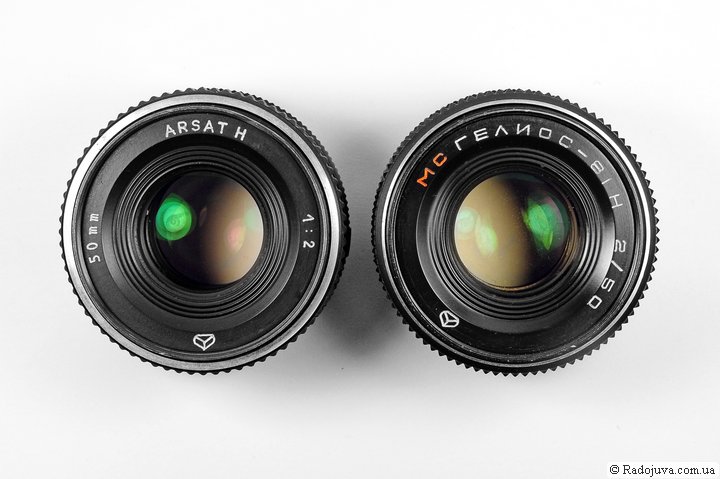
Just different names: ARSAT 1: 2 50mm МС ГЕЛИОС-81Н 2/50
Optically, they are the same lens. The difference between lenses with different names lies in different mounting threads or mounts, body rims, enlightenment and age. Many new lenses MS Helios-81Nreleased in Ukraine (after the collapse of the Union) are called Arsat. This review discusses one of the most popular lenses, namely MS Helios-81H 2/50.
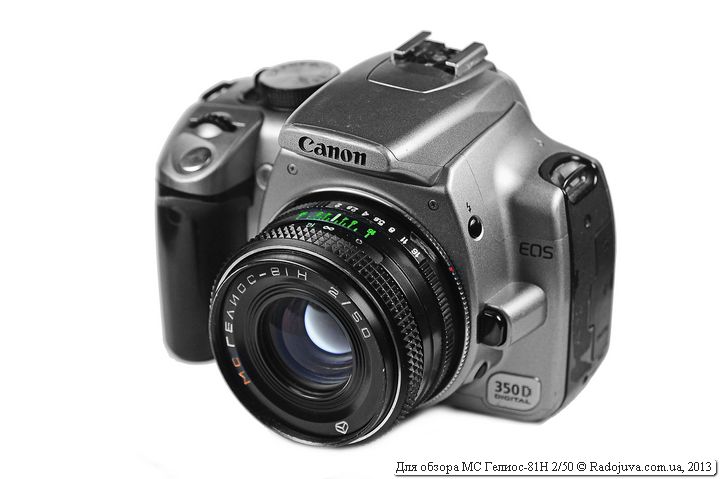
View of the Helios-81N MS lens on a Canon EOS camera 350D Digital The lens is mounted using a cheap adapter Nikon mount F - Canon EOS.
As usual, the first thing you feel and pay attention when using the old lens is its weight, the lens is small, very short, it resembles a pancake. The weight of this “pancake” is quite large. The build quality is usual - a lot of metal and glass. The lens has no backlash.
Interesting: 81-H is read not as 81-'ash ', but as 81-'en'. Easy to remember 81-Nikon, as 'H' mount is Nikon F mount (Nikon F mount)
MS Helios 81-N produced at the Arsenal plants in Kiev or Uman in Ukraine. The lens used special lanthanum glasses - super-heavy crowns with high resolution, this allows you to partially get rid of chromatic aberrations.
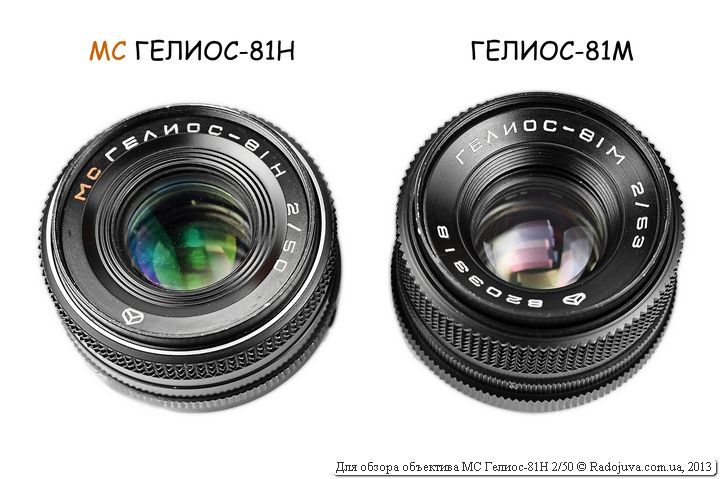
So there are two versions of the Helios 81 lens
How to use with modern cameras
Nikon F-mount DSLRs
To use the Nikon MS Helios-81H 2/50 lens on Nikon DSLR cameras just install the lens without any adapters and shoot for your own pleasure without any tangible limitations. Possibility focusing on infinity, as well as semi-automatic iris control... This is due to the fact that MC Helios-81H 2/50 uses the same bayonet mount (mount type) as the native Nikon lenses. All lenses from cameras Kiev-17, Kiev-17m, Kiev-18, Kiev-19 and Kiev-19m, Kiev-20 use the Nikon F mount, the same as that of modern Nikon DSLRs. Some cameras will even have automatic metering exposure. Exact list of cameras that support metering exposure with manual lenses (such as this one) you can see here or here. For more information on how to use manual lenses, see my article. Soviet optics.
Important: although the lenses MC Helios-81N 2/50 have a protrusion for transmitting the aperture value to the camera through the aperture rheostat (copy AI Nikkor Lenses), while the diaphragm skirt may be too long (like PRE-AI Nikkor Lenses) because some Lenses Helios-81 2/50 without additional modification cannot be installed on modern Nikon DSLR cameras. Some can only be installed on a specific list of cameras. To treat such a disease can be very simple - just cut off part of the diaphragm control ring, as shown in the figure by Sergei Elizarov here.
It's important: if you come across a lens that does not sit on your camera and you don’t want to cut it, you can still easily use the lens on any Nikon DSLR with macro rings... MC Helios-81N 2/50 can be easily installed on any Nikon F cameras via Any extension tube for Nikon F-mount cameras... However, this loses the ability to focus to infinity and medium focusing distances.
Important: to immediately find a variant of MC Helios-81H 2/50, which can work on any Nikon F-mount SLR camera, you need to look for lens options with the name MC Helios-81H 2/50 (or MC HELIOS-81H 2/50) and without a serial numbers near the front lens, as well as any lens variants with the modern name ARSAT.
Important: if something is not clear, or there is a desire to clarify - write in the comments under this review, I and other readers will try to suggest.
Nikon 1 mirrorless cameras
To use the lens on a series of mirrorless cameras Nikon 1 (Nikon 1S1, Nikon 1S2, Nikon 1 V1, Nikon 1 V2, Nikon 1 V3, Nikon 1 J1, Nikon 1 J2, Nikon 1 J3, Nikon 1 J4, Nikon 1 J5, Nikon 1 AW1) use the adapter Nikon F - Nikon 1. The cheapest adapters can be found aliexpress.com. For example, such an adapter can be easily purchased. here.
Important: there are no problems with any versions of Helios-81 for Nikon F mount (Nikon 'N') and any corresponding adapters.
Nikon Z mirrorless cameras
To use the lens on a series of mirrorless cameras Nikon Z use an original Nikon FTZ adapter.
You can use any inexpensive Chinese analogue, for example, such an adapter Nikon AI -> Nikon Z.
Important: there are no problems with any versions of Helios-81 for Nikon F mount (Nikon 'N') and any corresponding adapters.
Canon (EF, M, RF)
In order to install MC Helios-81N 2/50 on any modern digital SLR camera Canon EOS, you will need to use the adapter Nikon mount F - Canon EOS. Possibility focusing on infinity saved. The cheapest adapters can be found aliexpress.com. For example, adapter Nikon mount F - Canon EOS EF (aka Nikon AF-> Canon EF) easy to buy here.
It's important: all lenses of the Helios-81H family (with 'H' / 'Nikon F' mount), regardless of the year of manufacture and the features of the mount, can be installed on any camera without any problems Canon EOS using the specified adapter Nikon mount F - Canon EOS EF (aka Nikon AI-> Canon EF).
To use the lens on mirrorless cameras series Canon EOS M use adapter Nikon F - Canon EOS M (aka Nikon AI-Canon M). The cheapest adapters can be found aliexpress.com. For example, such an adapter can be easily purchased. here.
To use the lens on mirrorless cameras Canon EOS R series, use an adapter Nikon F - Canon EOS R (aka Nikon AI-> Canon RF). The cheapest adapters can be found aliexpress.com. For example, such an adapter can be easily purchased. here.
Sony (A, E)
Using the lens with SLR cameras Sony (DSLRs as well as SLT cameras with a translucent mirror) is difficult. For use, an adapter with a corrective lens should be used, which may negatively affect the image quality. If you still want to use MC Helios-81N 2/50 on cameras Sony / Minolta with A-mount, use the adapter Nikon F - Sony A. The cheapest adapters can be found aliexpress.com. For example, such an adapter can be easily purchased. here.
To use the lens on mirrorless cameras Sony NEX, Sony ILCE, Sony ALPHA with Sony E mount or Sony FEjust use an inexpensive adapter Nikon F - Sony E. The cheapest adapters can be found aliexpress.com. For example, such an adapter can be easily purchased. here... Also available for these cameras autofocus adapter Techart PRO Leica M - Sony E Autofocus Adapterwhich can be found at this link.
FUJIFILM (X, GFX)
X-mount mirrorless cameras require an adapter Nikon F -> Fuji X (aka AI-> X). The cheapest adapters can be found aliexpress.com. For example, such an adapter can be easily purchased. here.
For mirrorless medium format cameras with mount GFX need adapter Nikon F -> Fuji GFX (aka AI-> GFX). The cheapest adapters can be found aliexpress.com. For example, such an adapter can be easily purchased. here.
SIGMA / PANASONIC / LEICA (L, M)
An adapter is required for mirrorless cameras with Leica L mount (T, TL, SL) Nikon F -> Leica L (aka AI-> L). The cheapest adapters can be found aliexpress.com. For example, such an adapter can be easily purchased. here. For cameras with a Leica M mount need adapter Nikon F -> Leica M (aka AI-> M).
PENTAX
Using a lens with Pentax SLR cameras is difficult. For use, an adapter with a correction lens should be used, which can adversely affect image quality. If you still want to use Helios-81H 2/50 MC on Pentax cameras with K mount (and its modifications), then you should use the adapter Nikon F - Pentax K. The cheapest adapters can be found aliexpress.com. For example, such an adapter can be easily purchased. here... The same goes for a mirrorless camera. Pentax K-01.
To use the lens on Pentax mirrorless cameras with Pentax Q mount (Pentax Q, Pentax Q10, Pentax Q7, Pentax Q-s1)just use an inexpensive adapter Nikon F - Pentax Q. The cheapest adapters can be found aliexpress.com. For example, such an adapter can be easily purchased. here.
Samsung (NX)
NX mount mirrorless cameras require an adapter Nikon F -> Samsung NX (aka AI-> NX). The cheapest adapters can be found aliexpress.com. For example, such an adapter can be easily purchased. here. For the camera Nx mini adapters do not exist yet.
OLYMPUS / PANASONIC / KODAK / XIAOMI (mirrorless, MICRO 4/3)
To use the lens on mirrorless cameras OLYMPUS/PANASONIC/KODAK/ XIAOMI (and some others) with a Micro 4/3 mount, it is enough to use an inexpensive adapter Nikon F - MICRO 4/3. The cheapest adapters can be found aliexpress.com. For example, such an adapter can be easily purchased. here.
OLYMPUS / PANASONIC / LEICA (mirrors, 4/3)
For SLR cameras with a 4/3 mount (not to be confused with Micro 4/3!) An adapter is required Nikon F-> 4/3. The cheapest adapters can be found aliexpress.com. For example, such an adapter can be easily purchased. here.
Attention! Lenses of the HELIOS AUTOMAT series
Very important: the lenses Helios-81 2/50 AUTOMATIC и Helios-81 2/53 AUTOMATIC cannot be used with modern cameras. Simply there are no corresponding adapters. Attackers often give out Helios-81 2/50 Automatic (a review of this modification you can see here) и Helios-81 2/53 Automatic (a review of this modification you can see here) for the lens MC Helios-81N 2/50. Be attentive!
Sample photos on Nikon DX (APS-C, crop 1.5X)
Below are my photos for different modifications of the Helios-81 / Arsat H lens:
Jpeg source photos watch and / or download here (200+ photos on Nikon D40).
Sample photos on MC Helios-81H and Nikon FX (full frame, Full Frame)
All photos were taken on a Helios-81N MC and a full-frame camera Nikon D700 FX no processing. Reduced size to 1920 * 1080 pixels and imprinted data from EXIF.
UPDATED
Photographer shared examples of photos on MC Helios-81N 2/50 with readers of Radozhiva Lilia Nemykina:
My experience
I like Helios-81N, with it you can feel the spirit of Soviet lenses, get nice shots and feel like a real manual technician (a photographer who uses manual lenses).
Unfortunately, I must state the fact that in general this fifty kopeck piece loses in many respects to any autofocus similar lens. Helios-81N is very popular, but still, if possible, I recommend using autofocus fifty dollars. Some of them, for example, Nikon 50 / 1.8 AF MKI / II / III (D) (for cameras with a focus motor) or Yongnuo 50 / 1.8 (for any Nikon cameras) are only slightly more expensive than the Helios-81N.
Video review
My video review of the Helios-81 lens family with examples of photos you can see on my Youtube channel, or in the video below:
Results
Latest modifications of Helios 81H - some of the best standard Soviet high-aperture lenses... First of all, Helios 81H is interesting for its twisted bokeh, compact size and low cost. Among the shortcomings, one should single out the difficulty in searching for the “latest” MS modifications and an unblacked diaphragm.
Comments on this post do not require registration. Anyone can leave a comment. Many different photographic equipment can be found on AliExpress.
Material prepared Arkady Shapoval. Training/Consultations | Youtube | Facebook | Instagram | Twitter | Telegram

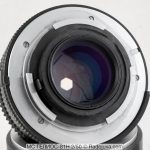
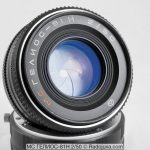
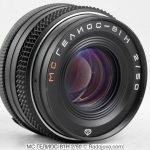
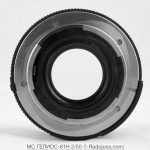
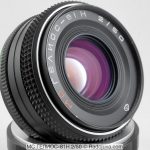
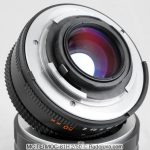
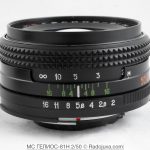
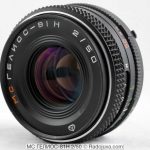
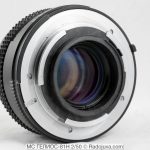
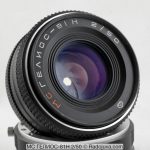
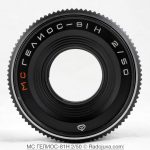
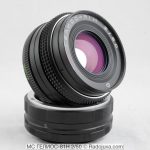
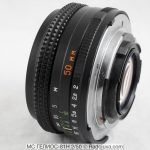
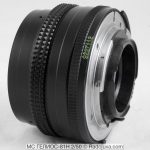
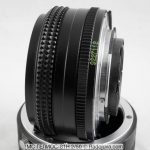
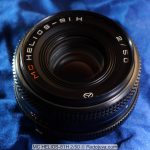
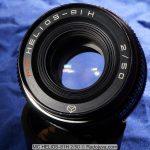
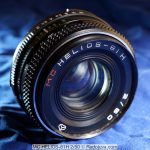
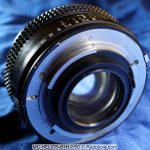
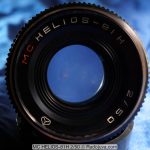
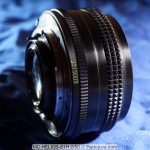
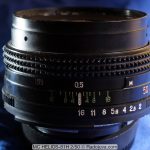
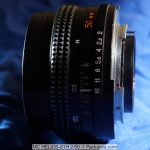
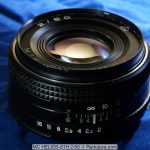
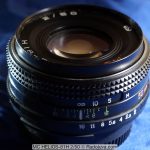
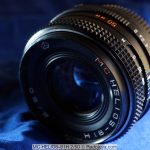
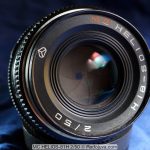
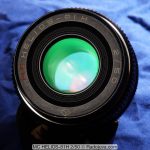
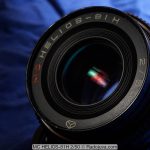
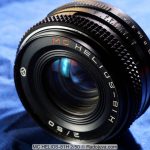
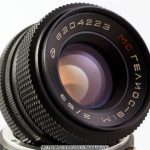
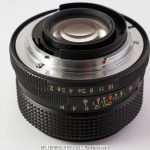
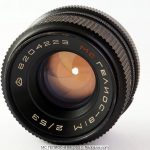
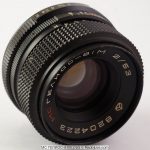
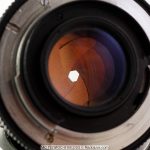
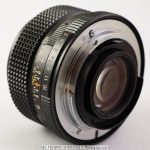
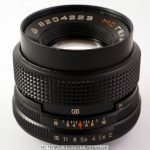
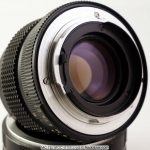
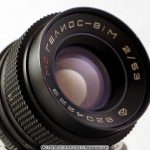
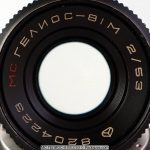
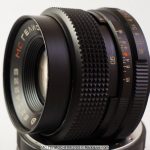
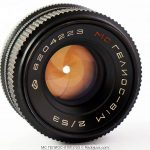
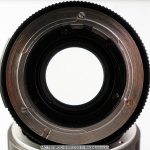
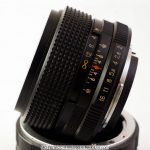
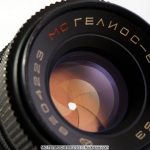
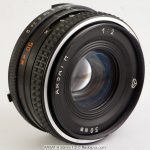
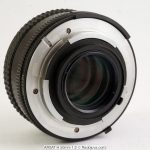
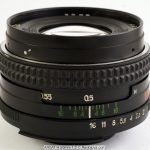
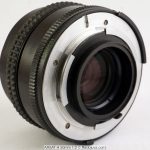
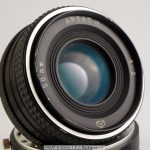
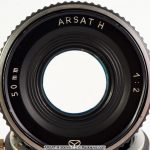
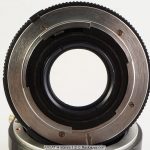
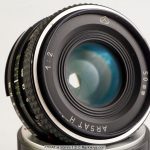
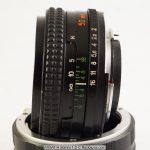
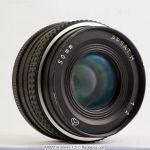
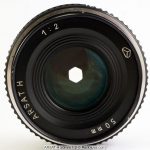
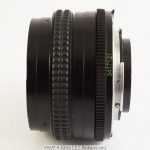
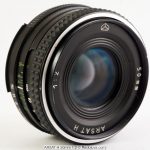
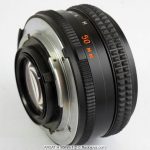
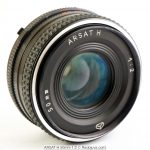
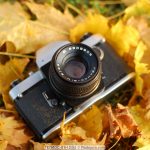
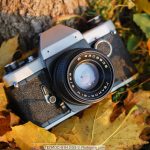
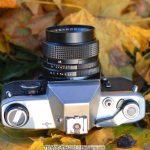
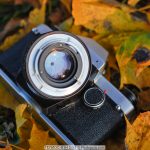
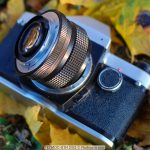
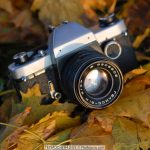
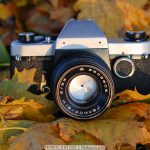
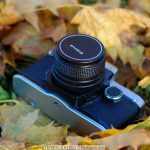
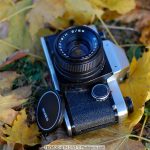
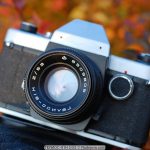
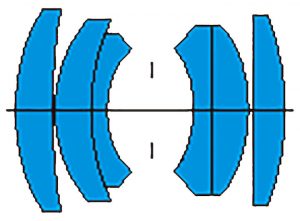
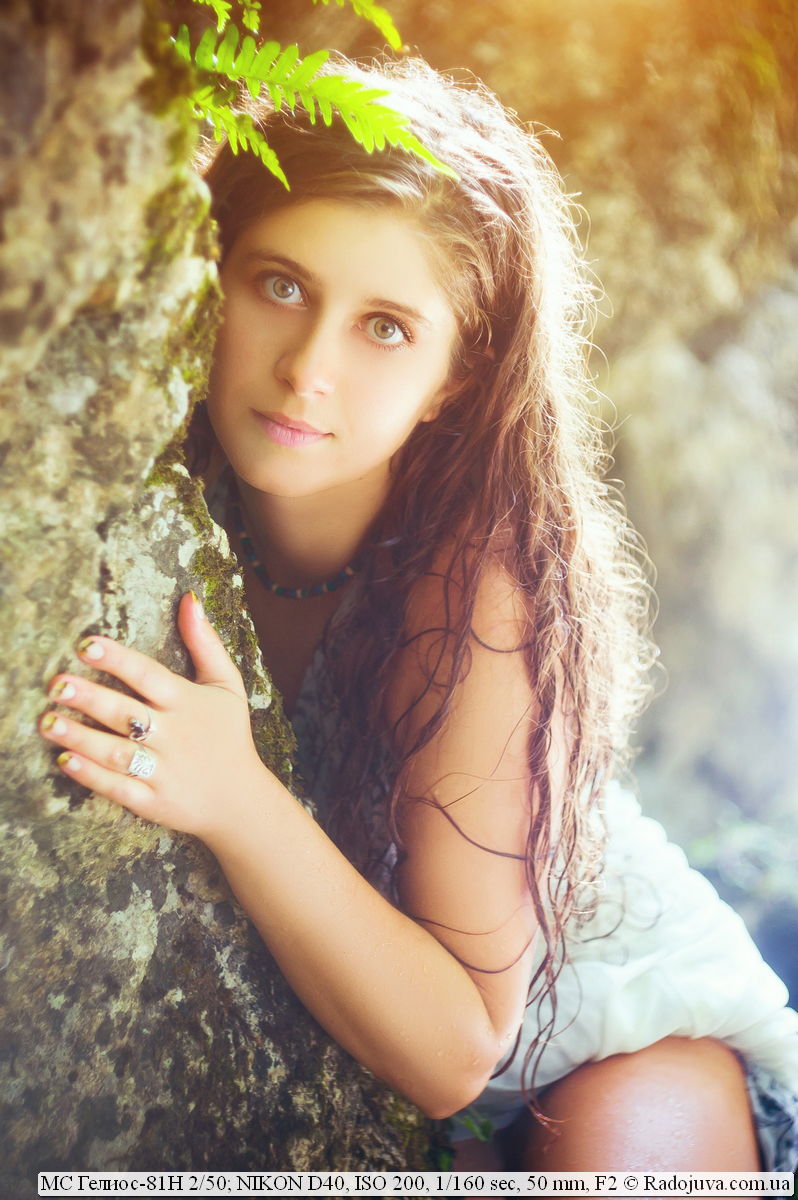
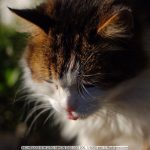







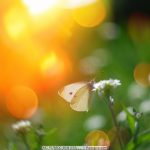
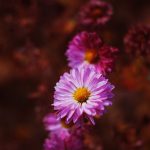
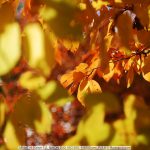
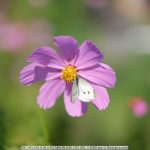
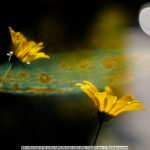
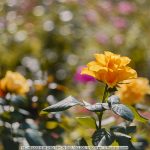

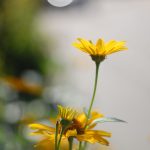



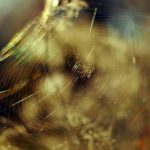
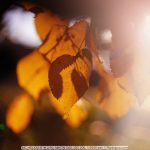
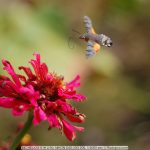
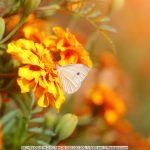

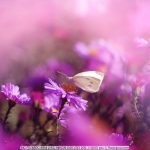

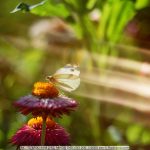












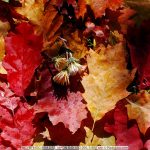


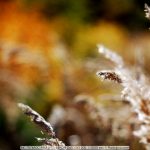









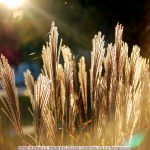



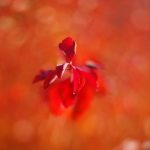


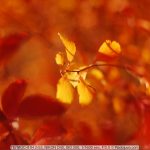
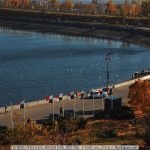






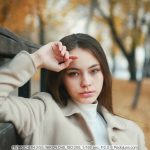



















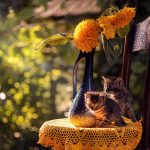






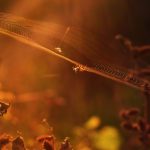
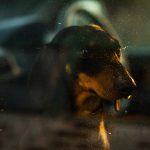










Hello. Does Helios 81N need an additional dandelion? Will it add functionality?
On younger cameras will add metering.
In addition to metering, it should add a sound confirmation of focus.
Focusing on the confirmation point gives a back \ front focus of 81H. Danced allows you to adjust the focus.
Alas, only for certain lighting. With his change, the focus walks. With the purchase of an advanced camera, I broke dandelions. In addition, they are very delicate and unreliable - contacts constantly flew out.
Tell me - ARSAT 50, will stand on Nikon D610, or you need to "cut", got up on the F-65, no problem, I didn't want to get up on the D-80, the problem is that I found only a cover from it, neither Kiev 19 nor I can find, they threw it somewhere and the mezzanine.
I found a lens, from Kiev 19, put on my shoes on the D610 without any problems, but still it turned out to be Helios 81N, and somewhere else Arsat was lying around. But back to the lenses - I compared it with Nikor 50-1.8D, - I shot it on F-2.0 and F-2.8 with room lighting-Conclusion = put Helios 81H, in the place where it lay for a long time on the mezzanine. This is a tale of wasted time.
Does it make sense to compare warm with soft? These are different lenses with different pictures.
And, most likely, you came across an unsuccessful instance; good G81N in sharpness is slightly inferior to Nikkor 50 / 1.8D. And the picture is often even more interesting.
Well, and to compare "under room lighting" - this, of course, is 5+ :)
On the street now in Moscow - not ICE - gloomy for weeks, the sky is asphalt - it is raining at the moment.
In nnogogo situations behaves even more confidently 1.4 G
Good afternoon!
At the moment I use canon 40mm f2.8 as a portrait on a crop. But the wife complains about the background is not blurry enough.
Do you think Helios-81N could be a good replacement for 40 f2.8 or something else to look for?
40 / 2.8 can blur the background quite well, just put your wife away from this background and closer to the lens :) If, say, it is half a meter from her to the background, and a meter from you to her, then 50 / 1.0 will not save.
http://i.imgur.com/4p2t4px.png - 20 / 2.8 in full frame
http://i.imgur.com/IuxaY5f.png - 24 / 2.8 - on the crop - it would be possible to squeeze the hole 4-5.6
http://i.imgur.com/Njmlmv4.png - 24 / 2.8 - on the crop - quite a blurry background. 40 will be even better.
If portraits are outdoors, there is where to turn around, - take Jupiter 37A (or Kaleinar 5n), it will wash out, so it will wash out.
U37A: https://ibb.co/28HNsLz
Helios 81n. My first manual lens) I like the picture very much! The only drawback is that according to the viewfinder, 85% is out of focus, even if it seems that it is in focus. Maybe I'm just crooked))
It was very interesting to promote! I cleaned everything I could with Kalosh gasoline, there was a lot of dirt, including on the diaphragm blades. After two nights of cleaning, set about assembling.
He lubricated the threads of SI-180, and after several evenings of torment with the assembly, smooth and tight gliding began to rustle, and the grease acquired a gray color. I plan to replace it with quote 201.
But this is not the problem at all) In general, do not care for lubrication. The problem is in the assembly.
I managed to assemble the diaphragm blades, the diaphragm ring with balls - it works perfectly in all positions.
But I can’t assemble the focus ring :) At first I couldn’t understand how to connect 2 parts with threads to get into the guides, then I was tormented with trying to figure out how to insert the lens block so that it got to the right place and the holes for the screws came together :)
Unsolved problem - a wide focusing ring (on which a ring with marks is attached and which should fix in the extreme positions of focus) it is twisted.


Miraculously, I was able to assemble the lens (completely!) And even fixed itself in extreme positions, BUT at the infinity mark this very infinity was not + the ring itself creaked a little somewhere between the 0.5-0.7m marks. I figured it out again, I don't know where the error is and how to fix it. I looked through all the articles and videos on cleaning, disassembling and assembling. But apart from “it is necessary to put marks” and “to get into the multi-start thread” they do not explain anything. I have no idea where it was necessary to put marks and where is the same multi-start thread) The only marks that I made and I understand this are on the lens block and on the thread with guides - so that the holes for the screws converge. In the photo I have. I don’t regret the disassembly, even though I can’t put it back together right now)) I’ll be glad if step by step, or just describe in more or less detail what and how!
Gorgeous! Radioactive
Who is radioactive? Helios ?!
Probably the author is radioactive and gorgeous at the same time, he took apart the gelik =)
Who will tell you in what position the diaphragm on the Helios-81N taken from the camera should be closed or open? Should the diaphragm repeater itself close it, or should the camera do this?
Now I try Helios-81N and Kaleinar-5N on the Nikon D40.
On the removed Kaleinar, the diaphragm closes itself.
But on Helios, the lever is in free flight, it does not spring, but remains in the position in which I leave it, and when mounted on the camera, the diaphragm does not close.
So it should be, or is the lens defective?
not working, but rather the spring has flown, remove the bayonet and put it in place (you may have to tighten the spring's antennae with pliers)
Thank you!
Hello! A week ago I bought this glass for Canon 40D, to indulge. In general, I like it. But there are a couple of points that I don't understand. I will say right away - there are no problems described below with the Canon EF 28-135mm f 3.5-5.6 USM IS.
1) The camera does not correctly select the shutter speed in Av mode with decreasing aperture. I mean, at f2 the picture has the most correct exposure. But as the aperture decreases (f2.8, f4, etc.), the picture gradually begins to become more and more overexposed (for example, at f11 it may already be 2 stops lighter than at f2). In general, the shutter speed is selected incorrectly at covered apertures. At f4, let's say - 1/2000, then at f5.6 - 1/750, and at f8 - 1/250 (I just took pictures from the window). As a result, everything is white on f11-16. It's unpleasant.
2) With a Kenon lens, the shutter speed changes exactly with the click of the wheel, with Helios - somewhere in half a second. Although I took the adapter for it with a chip.
In general, I'm just wondering: should it be, or is it something with the lens? Tell me.
PS If necessary, I can lay out examples of photos.
It should be so.
1. Canon’s focusing screen has non-linear light transmission (expressed incorrectly, but something like that), so an exposure error occurs.
Here it was http://evtifeev.com/6248-problema-pereekspozicii-i-nedoekspozicii-pri-ispolzovanii-adapterov-s-manualnymi-obektivami.html
2. If you watch the shutter speed while moving the camera from a dark object to a light one, you will see the same delay in metering the exposure. And when you “change” the diaphragm on your own, nothing is additionally measured (and the diaphragm does not close), so there is no delay.
1. You can shoot in AV mode, but you don't need to set the aperture on the camera, you change it with your hands on the lens. Canon perceives a lens with a chip as a lens with an electronic diaphragm, which it “covers” when shooting (well, or gives a signal to cover). Therefore, the exposure is calculated taking into account the fact that the aperture is open, but will be closed to the desired value. And since it is already covered, then you will have overexposure for exactly as many steps as you turned your wheel.
2. Perhaps the nuances of the adapter. It still simulates a true compatible lens. It may issue a confirmation with a delay.
This is not an adapter; it is the exposure meter itself that slows down when recalculating. So on all cameras
Thanks for the answer. It's strange: I just removed the chip from the adapter, but the camera is again trying to overexpose the frame. Something like this happened: f2 - 1/200, f2.8 - 1/90, f4 - 1/40, f5.6 - 1/15. In total, at f16, the frame would be about 1,5-2 stops lighter. The hike is really to blame for the focusing screen, as Mikhail wrote.
Do you change the aperture only on the lens or on the camera? It is not necessary to exhibit it on the camera, take photos on the open. Cover on the lens.
I don’t change anything on the fotik. Moreover, without a chip, the aperture value is always “00”. Even with him it does not change - the value “1.4” is simply sewn into the chip, and no matter how you turn the wheel, it will remain so.
I forgot to add: I have a chip with built-in parameters - f1.4, 50mm. You cannot change them. The aperture is always displayed the same. But even without the chip, the wrong metering comes out.
What is better for Helios-81N and for manual optics in general, using “dandelions” or an exposure meter?
As I understand it, in most cases of working with a chip, the camera does not know what aperture is set on the lens during metering, because of this, critical exposure errors occur.
So why not use a light meter? What are they losing to "dandelions"?
The fact that few people have an external light meter) TTL flash metering will also work with a dandelion (also not correct, but it will)
And why will TTL be wrong, is it not in fact that without measurements the light measures?
Not in fact. It gives pre-flash, by which it calculates the necessary flash power, taking into account the aperture value, the distance to the object and a bunch (probably) of some other parameters. So it will be the same as with exposure.
Yesterday I decided to attach Helios 3200H with a Lushnikov chip to Nikon D81 and test it, set aperture 16 on the lens, in mode A I changed the aperture on the carcass when shooting - on the frames, overexposure is somewhere around + 2 + 3 stops. He began to understand, removed the lens from the carcass and began to manually set the apertures to 2, 2.8, 4, etc. photographing the diameter of the aperture hole on a smartphone, then put the lens on the carcass and ran the pictures for 3 seconds through all these apertures, comparing the resulting aperture hole with what was photographed on the smartphone. When shooting from a carcass, the diaphragms were at all values more open than necessary: at A = 5.6, it was actually 2.8, at A = 8, it was actually 4, etc. I compared the positions of the aperture control lever on Helios with any Nikon lens - it can be seen that the Helios lever is too wide and is 2mm closer to the left edge of the bayonet petal than necessary and, when shooting, it turns out that the aperture does not close enough, and this is why the over-exposure causes the carcass to think that the diaphragm is the same , but in fact, the hole in the picture is almost twice as wide. It is necessary to make constant exposure compensation in minus -2 -3. And the maximum closed aperture on the lens (16) is obtained if only the value of 36 is set in the carcass.
Question - has anyone tried to cut off the extra 2mm of the lever on the left in thickness (if you look at the lever from the outside of the lens from the side) so that the lever travel is like on a regular Nikon lens? Nikon's lenses have a distance of 8mm from the left edge of the aperture control lever to the edge of the bayonet blade, on Helios this distance is 6mm. If you tried to cut it down, did you get the correct correspondence between the aperture set in the carcass and the real value during shooting?
I wouldn’t file anything, but simply introduced exposure correction in the Lushnikov chip for each of the diaphragms.
in my Lushnikov chip, I did not find in the instructions how to make exposure compensation in the chip itself in programming mode. If you know, could you tell me?
And when you were programming dandelion, did you try to set the minimum aperture not to 16, but 32?
But this is the right question.
If you put a minimum aperture of 16 instead of 32 in the chip, then when specifying 16 in the carcass, the minimum on the lens will be somewhere around 5.6, judging by the hole, is no longer done. Therefore, when I put 32 in the chip, the leash moves to a greater distance and, the real diaphragm can be closed almost to 13-16.
In general, today I removed 2mm from the lever of the Helios jump rope on the left side and put the minimum aperture value into the dandelion chip 16. I tested it - it became much better, the following table of correspondence of the lens aperture value, carcass and exposure compensation was obtained:
lens - 2; 2,8; 4; 5,6; eight
carcass - 2; 3,5; 7,1; eleven; sixteen
exp.corr - 0; -0,7; -1,7; -2; -2
already the diaphragm 8 is not put, it is still necessary to grind down a millimeter, well, figs with it ... :)
at least keeping in mind this plate was more comfortable to remove.
“Gelios-81N” is a Radiansky consumer goods. It’s not a good idea to check the accuracy and reliability.
Well, I don't know ... I compared the sharpness with the new 35mm 1.8G Nikkor, so the helios at f / 5.6 in the center of the frame turned out to be sharper and even resolved the 24MP matrix. At the edges, of course, it is worse ... Helios got it for a penny - so, for perversions it will go :)
Hello! Now I use Helios-81H on D200, I set the lens parameters in the camera, when you turn the aperture ring on the lens, the camera sees which aperture is set. In “A” mode, the aperture value on the camera follows the ring on the lens.
On the street, the exposure is similar to the truth, but when shooting with a flash in a room of 5,6 frames, it turns out very dark, you have to adjust the flash in plus by 3-4 steps.
What am I doing wrong? If the camera knows exactly what aperture is set on the lens, then why are the frames with the flash dark?
Helios has a non-linear pusher of a rheostat / diaphragm (does not coincide with the Nikon standard), according to user reviews, for proper exposure compensation when closing, you need to increase the exposure by about 1.5-2 stops
Thanks! In practice, it seems to be so.
It is not clear why it is necessary to increase, because if the camera accurately writes the aperture, and making the lens smaller does not allow the lens ring, regardless of the position of the pusher, then the error should be in the opposite direction.
The diaphragm size only matches on a fully open aperture. The stronger you close, the more you need to add exposure compensation. This is due to non-linearity, as stated above. This applies to all lenses from Kiev (licensed copy of the old film Nikon) such as Kaleinar 5N, etc.
Helios 81H does not want to be installed on the Nikon F80 film - it is not completely screwed into the mount. It's a pity, apparently this diaphragm skirt gets in the way.
Super lens. I take it with me more often than Nikon 35 1.8 g. I use in conjunction with Nikon d5200. The picture is very pleasing. Beautifully draws bokeh. Sharpness is good. It works only in mode M.
For portraits, that's it. If you want to see the photos, then open Odnoklassniki and find Vladimir Shirnevich there. Who needs more information about him I will be glad to share ...
From which city though? 94 Vladimir Shirnevich in OK.
Found. Thanks. Great photos. Shot by Nikon, I guess.
Just because I bought the Nikkor AF 50mm 1.8D because there is no metering on the D3100 with a helius, and I like it better on open helios. But to click 10 times of frames while you guess the exposure is not my way, maybe someone knows more about the experience the first time.
I have Zenitar-M 50 1.7. First I used it in a combo with Sony A3500, now I switched to nikon d3200. While I wait for the adapter and I think it is worth changing to Helios or not?)
Good day! Please tell me what I'm doing wrong. I enjoy using the Helios 44-2 on the nikon d60 camera, my favorite and main lens. He shot to manual focus, sharp shots in 95% of cases, nick
Good day! Please tell me what I'm doing wrong. I enjoy using the Helios 44-2 on the nikon d60 camera, my favorite and main lens. He shot to manual focus, sharp frames in 95% of cases. I bought Helios 81-N (due to bokeh), I got it with a dandelion, there is a sound confirmation of focus. The frame is sharp in the viewfinder. In the photo it turns out that I miss. Who faced No focus through the camera screen
Dandelion has a front-back focus calibration. But it will still smear when changing lighting. Download the instructions for programming.
Thanks for the answer
If from the 44th they shot, from the 81st also master.
Thanks for the answer
Hello, and in full growth, how are the frames obtained? The man is sharp, but the background is blurry? Far to go away?
Depth of Field Calculator to help, as with other lenses.
Hello. You need to move away until the person fits in the frame (with a vertical position of the camera about 6 meters), the background should be located the farther, the better (farther the object is 2 times or more). Aperture is open.
I don’t know, such an algorithm helps me: e1) Compose the frame as you like (if this is normal homosapience, and not a Brownian child in a cube).
Then, check that the person is in focus (aim at the eyes, follow the sensor from the bottom left, as usual, it signals whether the person has got into the flu, whether the focus object (in this case, the eyes) comes out clear.
Sometimes it is enough to adjust the focusing with the ring, if not, then you need to walk with your feet, as is the case with any fix.
Good luck.
Hello.
Has anyone encountered the lens option that is in the picture. The case is very similar to the Helios-81M 2/53.
She wonders if it is identical to the classic 81H in terms of design and quality, and is it really longer than the classic.
Thank you.
Good afternoon, tell me what diameter of the thread for ms Helius 81n. I ordered a 52 mm hood on alik, it did not fit, it fits the whale, there is no helius.
If it does not fit on 52, then the thread on 49. They were produced in 2 versions.
ATP
Which in terms of sharpness and quality will be better: 81 or Yongnuo Lens EF 50mm 1: 1.8. focusing manually is not scary.
I bought it yesterday in the amateur photographer
The lack of a light meter does not frighten the Nubus, it costs 2-3 snapshots of the Nubus to adapt. I tested three lenses, I chose one with a not too tight focus ring (it turned out to be critical)
For half an hour I went photographing the props in Gostinka. I really liked it. I already have a manual Nikon 28mm 2.0. The sensations are very similar, but there is also a portraiture. Maybe this is a consequence of the fact that I'm not a pro, and I don’t look at the sharpness at the edges and the potential for printing, but the picture was very appealing, more than the native 1.4, 81N is less contrast in the good sense of the phrase. But no less harsh.
The range finder works well and steadily (if I correctly call the focus sensor in the lower left), it’s really right for me.
The article says that without additional transformations it will not get on the D90. Strange, but I tested it on this old crop - it works perfectly (that is, without a diaphragm sensor on the display, only manually on the ring). BUT this did not bother me, since the manual 28 2.0 also did not display the f-number on the display on all cameras.
Thanks to the PHOTO lover, patiently waiting for me to finish the full test drive
fr 2, DOF narrow, focus only on the ball. And with this - a photo through an imperfect mirror of a shop window
https://imgur.com/a/5kCOYAg
https://imgur.com/a/lEk77wJ also aperture - something not exceeding 2.8
https://imgur.com/a/gVamYSA young misfortune
wrong, wanted this picch
https://imgur.com/a/zT5KrZC DOF narrow (2), focus on the ball, through the window
Hello! I have an MS HELIOS-81N 2/53 lens. You don't have a review of it on your site, but is it different from the one presented? And one more thing: on the Internet, I couldn't find how to block the jumping aperture of this particular lens? I have a Nikon7000 camera and for some reason there is no “infinity” on this glass. Thank you!
Why block the jump rope on d7000? Let it work. And at the expense of infinity - maybe the lens was repaired? There should be infinity on Nikon.
Must be. Otherwise, the meaning? So something is wrong.
If you are not afraid, you can try to figure it out yourself https://photoclub.by/blog/2887
Or to the master, if you find.
Good evening! Tell the lover. I want to try Soviet optics for my Nikon. What is better to take, such a Helios 81 or Helios 44th? Mostly for portraits.
What kind of camera is the answer. If Nikon is this, others - 44 or again this.
81Н
But in fact - there are no restrictions. If you are not afraid of a small loss in quality.
I'm a beginner and am not particularly fond of quality, pixels and sharpness. Clung to the D800 different, through adapters with an M42 lens (these are all 44 60-70s years of production), with an M39 thread to an M42 + an adapter from M42 to Nikon - all earlier versions with an M39 thread.
Optionally, of course, Helios 81, since it already has a Nikon F mount, it will focus on infinity without any problems, the aperture is displayed on the screen.
But lenses are taken not only on the basis of compatibility. Sometimes just the advantage will be the number of petals. It depends on which picture you want to receive.
They are not so expensive.
It seems to me that in this situation it is better to purchase various modifications of Geliks, try and sell those that will not work. Most likely sell without financial losses, as the demand for them is about the same.
But the old models (up to 81N), which through the adapter, are, of course, easier to cling to Cannon.
Thank you!
Definitely G-81, one of the best Soviet fifty dollars, and under Nikon.